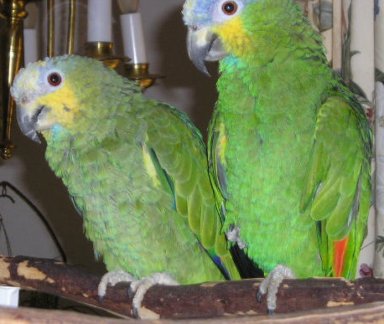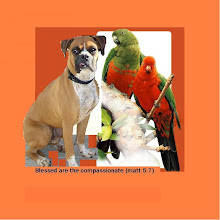aka: Feathered Friends Castle
Successful Placements and Adoptions
we no longer accept personal checks
click here to Email us
BOXER ADOPTION APPLICATION
DATE: ____________
Name of Dog or Breed of dog you are interested in _________
YOUR NAME ___________________________________
Physical home address: _ _________________________________
CITY: ________________
STATE: _____Zip _____________
PHONE NUMBER: H- ___ ________ C-_______________
Email ___________________
WHERE DO YOU LIVE? (PLEASE CIRCLE ONE)
HOUSE
CONDO/APT
MOBILE HOME
STUDENT OR MILITARY HOUSING
HOW LONG HAVE YOU LIVED AT YOUR PRESENT ADDRESS? _ __________
DO YOU OWN YOUR HOME? Y/N
(IF YES, PLEASE PROVIDE PROOF OF OWNERSHIP: property tax bill, mortgage receipt)
DO YOU RENT? Y/N
IF YOU RENT: LANDLORD'S NAME _______________________
LANDLORD'S PHONE NUMBER ___________________
ARE YOU PLANNING ON MOVING WITHIN THE NEXT 6 MONTHS? Y/N
IF YES, WHAT ARE YOUR PLANS FOR YOUR COMPANION ANIMAL IF YOU ARE MOVING?
_____________ ________________
IF YOU DECIDE TO MOVE IN THE FUTURE, WHAT WILL YOU DO WITH YOUR COMPANION ANIMAL? _____________________________________________
_______________________________________________________________
WHAT WILL YOU DO WITH YOUR COMPANION ANIMAL IF YOU GO ON VACATION?
_____________________________________________________________
______________________________________________________________
WHERE WILL YOUR COMPANION ANIMAL SLEEP?
_____________________________________________________________
______________________________________________________________
HOW MANY HOURS A DAY WILL YOUR COMPANION ANIMAL BE ALONE? ___ __________
Your EMPLOYER ________________________________
Partner or Spouse’s employer____________
Your OCCUPATION ______________________________
Partner or spouse’s occupation_______________
CAN YOU BE CONTACTED AT YOUR PLACE OF WORK? Y/N
IF YES, your WORK PHONE #: __________
Partner’s work number _____________________
HOW MANY ADULTS IN YOUR HOME? _________
List their names and ages please.
ARE THERE CHILDREN IN YOUR HOME? Y/N
IF YES, WHAT ARE THEIR AGES? _____ ___________________
ARE ALL MEMBERS OF YOUR HOUSEHOLD AWARE OF YOUR PLANS TO ADOPT AN ANIMAL? Y/N
Do all members of your household want you to adopt an animal?
ARE ANY MEMBERS OF YOUR HOUSEHOLD ALLERGIC TO ANIMALS? Y/N
WHO WILL BE RESPONSIBLE FOR THE ANIMAL? ____ ________________
DO YOU HAVE CATS? _______________name of cat______________
IF YES, ARE CATS KEPT STRICTLY INDOORS? Y/N
ARE CATS DECLAWED? Y/N
DO YOU HAVE DOGS?__________________ names of dogs______________
What other animals do you have ? ________________
ARE ALL ANIMALS IN YOUR HOUSEHOLD SPAYED/NEUTERED? Y/N
NAME OF VETERINARIAN ___ ______________________
Address of Veterinarian__________________________
PHONE NUMBER ____________________________
IF NO COMPANION ANIMALS AT THIS TIME, HAVE YOU HAD ANY IN THE LAST 5 YEARS? Y/N
IF YES, WHAT HAPPENED TO THEM?________________________
REFERENCES: (no relatives please)
NAME:____________________
PHONE NUMBER:________________
NAME:__________________
PHONE NUMBER:________________
NAME:________________
PHONE NUMBER:__________________
Is SOMEONE AT HOME DURING THE DAYTIME? Y/N
How do you plan on exercising your dog?___________
What accommodations will you provide for the dogs sleeping?____________
What type of toileting procedure do you plan to use for dog to eliminate? (fenced yard, walk on leash, loose outside, cable tie out, chain to a tree)________________________details please.
NEIGHBORHOOD: Urban / Suburban / Rural
O I do understand there is an non refundable Adoption Donation
O I do understand the dog will be licensed and vetted as needed
O I will allow a representative of FFCR to Visit my home
O I do agree to contact FFCR if I can no longer keep the dog
>> I heard of FFCR by means of O Internet O Shelter O Poster O Friend O Petco O Other
Other (Please explain): ______________________
I represent that the information that I have provided on this form is the truth to the best of my knowledge and belief, and hereby give my permission for you to use any of the above information to confirm that all information provided is the truth. This means you give us your permission to call references and that you allow us to contact your vet and that you hereby give consent for your vet to release the information in your current/past pet's health files to us.
Print your name here: ____________________________________________
Sign your name here: _______________________
Print name of your spouse or partner here: _______________
Signature of spouse here: __________________________________
-adoption donation/deposit required with submission of application-
usually 50% of the adoption fee, then at pickup of dog the additional 50% will be paid in cash.
fees vary with age and type of dog approved for.
PLEASE NOTE: We are no longer accepting personal checks. Deposits payable with money order bought at US Post Office (federally issued and traceable).
Remaining balance due at pickup of your new best friend- is to be made in CASH only












 Parrot Rescue Located in private home in southern vermont. caregiver is retired vet tech who is devoted to rehabing birds to health and wellness in loving environment. Aviary is closed to public for disease prevention and family privacy
Parrot Rescue Located in private home in southern vermont. caregiver is retired vet tech who is devoted to rehabing birds to health and wellness in loving environment. Aviary is closed to public for disease prevention and family privacy Oatmeal Apple muffins
Oatmeal Apple muffins 
 --------
-------- Birdie Cookies
Birdie Cookies 